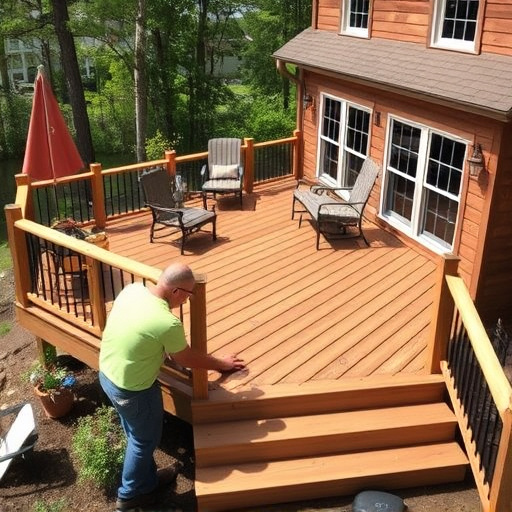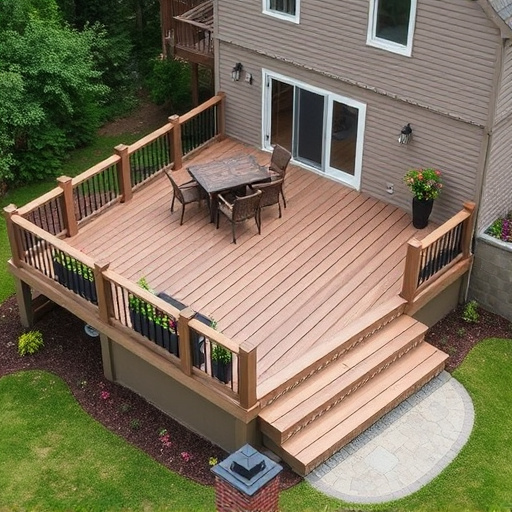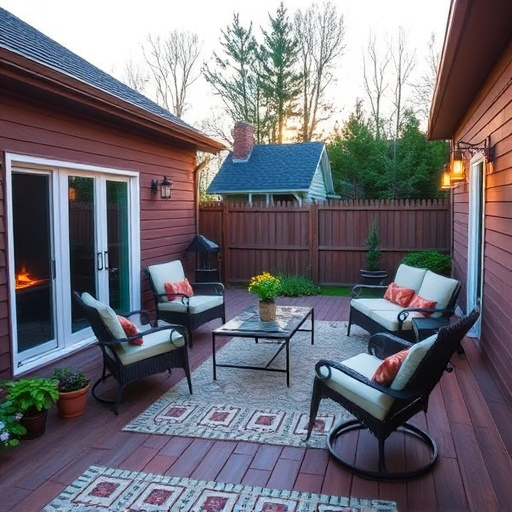Understanding regional climates is crucial for choosing suitable deck board materials. Regular inspections and prompt repairs prevent water intrusion, maintain structural integrity, and save on costly renovations. Proper preparation, including cleaning, sealing, and repairing damage, enhances sealant effectiveness and protects against future storm damage. Using sealers recommended by professionals ensures deck boards' durability, especially in commercial settings facing diverse weather conditions.
Protect your deck’s investment with a simple guide to sealing deck boards against harsh weather. Understanding the vulnerabilities of different materials is key, especially as varying types of sealers offer unique protection. Before applying any sealer, proper preparation—cleaning and inspecting—is crucial for long-lasting results. Discover the step-by-step process for ensuring your deck boards withstand the elements, preserving their beauty and longevity.
- Understanding Deck Board Material and Their Vulnerabilities
- Preparation: Cleaning and Inspecting Before Sealing
- Applying Sealers: Types and Step-by-Step Process
Understanding Deck Board Material and Their Vulnerabilities

Deck boards, a fundamental component of outdoor decking, come in various materials each with unique vulnerabilities to weather damage. Treated wood, a popular choice, can withstand harsh conditions but is susceptible to rot and insect infestation over time. Composite decking, known for its low maintenance, offers better resistance to moisture but may fade or become brittle in extreme temperatures. Vinyl boards are durable against rot and insects but can crack under heavy snow or ice loads. Understanding these vulnerabilities is crucial when selecting materials that best suit your region’s climate.
Regularly inspecting deck boards and addressing any signs of damage is essential for maintaining their integrity, extending their lifespan, and preventing costly repairs. In the world of roofing services and residential siding, protecting deck boards from weather-related issues isn’t just about aesthetics; it ensures structural stability, prevents water intrusion into homes, and reduces the need for frequent replacements or extensive renovations, ultimately saving homeowners time and money in the long run.
Preparation: Cleaning and Inspecting Before Sealing

Before sealing your deck boards, proper preparation is key to achieving long-lasting protection against weather damage. Start by thoroughly cleaning the deck surface using a pressure washer or a broom and water solution. This step eliminates dirt, debris, and any existing stains that could interfere with the sealant’s adhesion. Ensure you clean both the top and bottom sides of the boards as well as the joints to ensure even coverage during sealing.
Once cleaned, inspect your deck boards for any signs of damage, rot, or warping. Repair or replace any damaged boards immediately to prevent further complications. Check for loose nails or screws and secure them tightly. This preparation process not only enhances the effectiveness of the sealant but also ensures that your deck is in excellent condition, preventing future issues like storm damage repair or even necessitating siding services or roof repair.
Applying Sealers: Types and Step-by-Step Process

Applying sealers is a crucial step in protecting your deck boards from the elements. There are various types available, each offering different levels of durability and aesthetic appeal. The process involves several key steps to ensure optimal coverage and longevity. Firstly, clean the deck surface thoroughly to remove any dirt, debris, or existing sealant. This can be done using a pressure washer, ensuring all areas are free from contaminants. Next, allow the wood to dry completely before proceeding.
For best results, apply the sealer in a crisscross pattern using a brush or roller, making sure to overlap each pass slightly. Let the first coat dry according to the manufacturer’s instructions, then assess if an additional coat is necessary for adequate protection. Professional siding and roof consulting services often recommend sealing as a preventive measure, especially for commercial roofing applications, where deck boards are exposed to varying weather conditions.
Sealing your deck boards is a proactive step towards preserving their longevity and aesthetic appeal. By understanding the material, preparing the surface adequately, and choosing the right sealer, you can protect your deck from weather damage. Regular maintenance, including cleaning and inspecting before sealing, ensures that your deck boards remain strong and vibrant for years to come, enhancing the overall beauty of your outdoor space.














